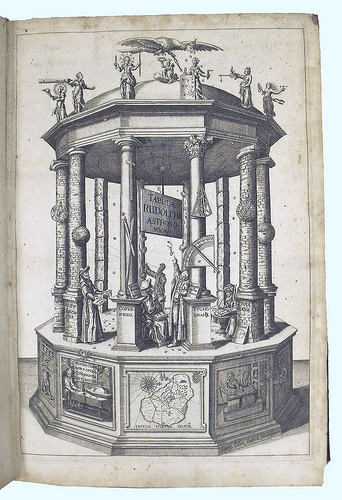open questions
What I'm wondering about...
Here I will store some questions which have either come up in research, or which I am idly curious about; my criterion for posting such a question here is that it should be easy to state and have interesting consequences. Please let me know if you have an answer! If you would like to know why I think these questions are interesting, feel free to send me an email.
Let \(\text{Mod}_{g,n}\) be the mapping class group of an orientable genus \(g\) surface with \(n\) punctures. If \(g\geq 3\), is it the case that all irreducible complex representations of \(\text{Mod}_{g,n}\) are rigid? What if \(g\) is arbitrary and one in addition fixes the conjugacy classes of all Dehn twists?
Let \(\Sigma_{g,n}\) be an orientable genus \(g\) surface with \(n\) punctures. What is the minimum rank of a complex representation of \(\pi_1(\Sigma_{g,n})\) with infinite image and finite orbit under \(\text{Mod}_{g,n}\)? What is the minimum rank of a semisimple complex representation of \(\pi_1(\Sigma_{g,n})\) with infinite image and finite orbit under \(\text{Mod}_{g,n}\)?
There are a number of conditions on a local system that are supposed to be equivalent to the statement that it comes from geometry (arithmetic, underlies an integral polarizable variation of Hodge structure, nilpotent p-curvatures, etc.). Can one show that any of these conditions imply each other?
Consider the collection of all (say) motivic local systems on all smooth varieties. What is the smallest subset of this collection closed under pullback, pushforward along finite étale maps, tensor products, and subquotients, and containing the rigid local systems? Is it everything? What about the analogous question with, say, local systems underlying a polarizable integral variation of Hodge structure?
Let \(C, D\) be smooth projective (connected) curves over \(\overline{\mathbb{F}_q}\) of genus at least \(2\). Do they necessarily have a finite etale cover in common? See e.g. this paper of Bogomolov and Tschinkel for an answer to a related question.
Let \(X\) be a smooth projective (connected) variety over \(\mathbb{C}\). Suppose there exists an ample vector bundle \(\mathscr{E}\) on \(X\) such that $$\text{Hom}(\mathscr{E}, T_X)\neq 0.$$ Is it the case that \(X\simeq \mathbb{P}^n\)? See e.g. this paper of mine for some remarks on this question, as well as this paper of Paltin Ionescu. UPDATE: Now proven! See this paper by Jie Liu.
Let \(C\) be a curve over a finite field \(k\). Let \(x_0, x_1\in C(k)\) be rational points. Let $$\cdots C_i\to C_{i-1}\to \cdots C_1\to C$$ be a tower of \(\ell\)-power finite etale covers of \(C\), and let \(y_0^i, y_1^i\in C_i(\bar k)\) be lifts of \(x_0, x_1\) to \(C_i\). How rapidly does the \(\ell\)-part of the order of $$[y_0^i]-[y_1^i]\in \text{Jac}(C_i)(\bar k)$$ grow in \(i\)? A good understanding of this question would be useful for bounding the "integral \(\ell\)-adic periods" that show up in this paper of mine.
In this note, I define a natural action of \(\mathfrak{sl}_2\times S_n\) on the free vector space spanned by labelled graphs with \(n\) vertices. Does this vector space arise naturally as the cohomology of some polarized variety with an \(S_n\)-action on it, where the \(\mathfrak{sl}_2\)-action comes from the Hard Lefschetz theorem? UPDATE: Will Sawin points out that one may take \(X=(\mathbb{P}^1)^{n\choose 2}\), with \(S_n\) acting via the natural action on \(2\)-element subsets of \(\{1, \cdots, n\}\). The quotient by this action gives a pretty interesting variety.
Let \(k\) be a field of characteristic \(p>0\) and \(X\) a projective \(k\)-variety. Let \(\mathscr{E}\) be an ample vector bundle on \(X\) and \(\mathscr{F}\) be a coherent sheaf on \(X\). Is it true that for \(n\gg 0\) and \(i\geq \text{rk}(\mathscr{E})\), $$H^i(X, \mathscr{E}^{(p^n)}\otimes \mathscr{F})=0?$$ In this paper I show that the answer is "yes" if \(X\) admits a Frobenius lift and \(\mathscr{E}\) lifts. This result would be very useful for proving vanishing theorems for ample vector bundles; the partial results I prove already imply a generalization of the Bott-Danilov-Steenbrink vanishing theorem.
Is there an example of a smooth projective variety \(X/\mathbb{C}\) and a birational morphism \(f: Y\to X\) (with \(Y\) also smooth and projective) such that
\(f\) exhibits \(Y\) as an iterated blowup of \(X\) along smooth subvarieties of codimension at least \(3\), and
\(X\) has finite automorphism group, but \(Y\) has infinite automorphism group?
If one replaces the number \(3\) above with the number \(2\), one may find examples of rational surfaces with this property.
